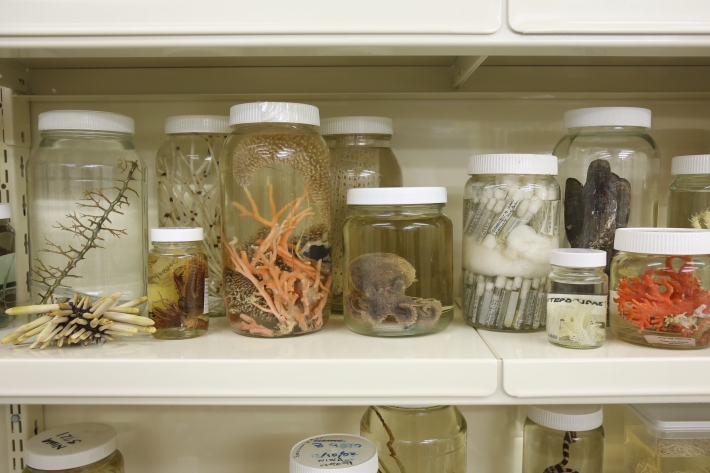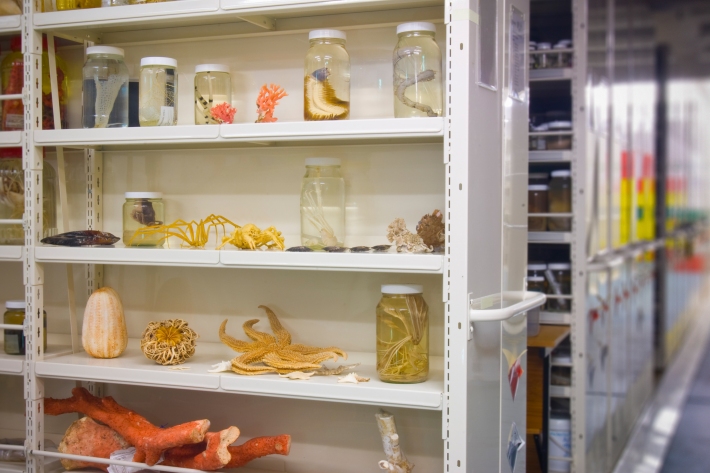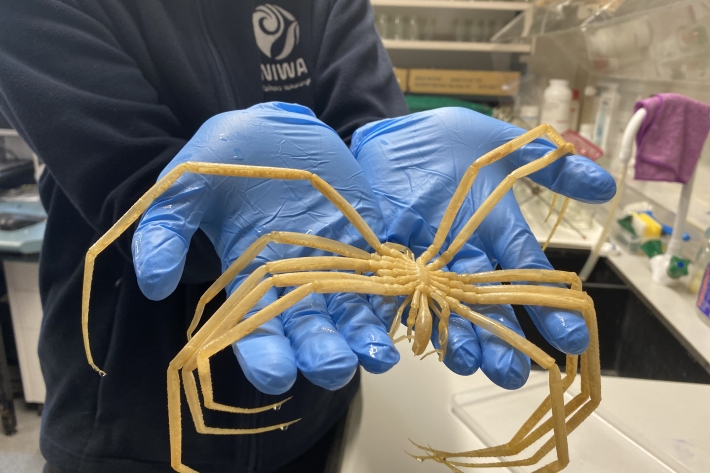There are more groups of marine and freshwater life than there are experts for them in New Zealand. NIWA has world authorities who specialise in several groups and some in our taxonomy team are being trained for other groups. Overseas experts are frequently invited to assist the team with identification and description of the other forms of marine life.
First we must be able to recognise if a species is new to science. There are several steps to the process.
Sorting and storing specimens
The techniques used depend on the type of specimen, for instance:
- large animals can be sorted by eye or low magnification
- micro-organisms, such as bacteria and viruses, may require high magnification and culturing.
Different approaches are also needed for different environments, such as deep marine, shore, and freshwater.
As an example, when marine life is collected by ship-board sampling from the continental shelf or deep sea it mostly comes on board as a mixed-up heap of animals, mud, sand, and some rocks. It has to be washed and sorted on board and representative samples preserved (sometimes frozen).
That initial sorting separates the catch into major categories like sponges, sea anemones, worms, crustaceans, shellfish, sea stars, fish, and so on. Back at NIWA, the preserved specimens may then be further sorted into apparent species, put into jars of alcohol, and registered into the NIWA Invertebrate Collection.
Comparing characteristics
Different groups of organisms need trained specialists (taxonomists) to distinguish a new species from one that is already named and scientifically described. If a taxonomist is not sure, the specimen has to be examined in detail and compared with other known similar species. Physical characteristics are compared using keys, descriptions, and illustrations in published literature. Taxonomists may also analyse genetic characteristics to separate species that look very similar.
Forrmal naming and describing
Once they determine that a species really is new, the taxonomist writes a formal description, makes photographs and illustrations, and invents a new name for it. They then submit a scientific paper describing it (usually with several other new species) to a scientific journal. The journal editor sends the draft paper to two or three other experts in different parts of the world. If they agree that the species is new they recommend formal publication.
Find out more
-

NIWA Invertebrate Collection
Software Tool/ResourceThe NIWA Invertebrate Collection (NIC) holds specimens from almost all invertebrate phyla. This is a result of about half a century of marine taxonomic and biodiversity research in the New Zealand region, the South West Pacific and the Ross Sea, Antarctica. -

Information for Scientists
Visitors come from around the world to the NIWA Invertebrate Collection to undertake research and work with our material. -

NIWA Invertebrate Collection Database on OBIS
NIWA Invertebrate Collection database on OBIS -
Loans - Policy and Procedures
Specimens can be loaned to universities, colleges, museums and other research or education institutions for the use of resident research staff.












